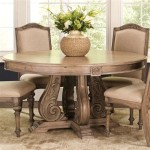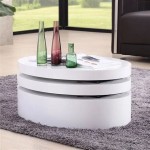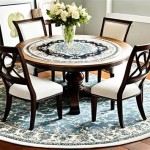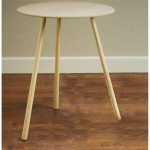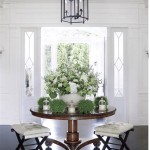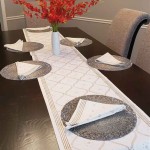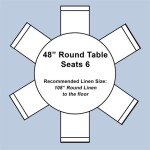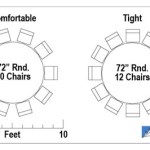How To Make A Quilted Table Runner For Beginners
Quilting can seem like a complex craft, but creating a simple quilted table runner is an excellent introductory project for beginners. A table runner is a relatively small item, allowing for experimentation with fabric choices, quilting patterns, and binding techniques without the commitment of a larger quilt. This article provides a step-by-step guide to making a basic quilted table runner, covering all essential processes from selecting materials to finishing the edges.
The process involves three primary stages: fabric selection and cutting, assembling the quilt top, and quilting and binding. Each stage is important for creating a durable and visually appealing finished product. Careful attention to detail throughout each process ensures a successful outcome, even for those new to the world of quilting.
Selecting Fabrics and Materials
The initial step involves selecting the fabric and materials needed for the table runner. This includes fabric for the top, batting for the middle layer, and fabric for the backing. Additional supplies, such as a rotary cutter, ruler, cutting mat, sewing machine, thread, pins, and an iron, are also essential.
Fabric selection is a crucial part of the process. Consider the color scheme and style of the room where the table runner will be used. It is also important to choose fabrics that are compatible in terms of weight and fiber content. Using 100% cotton fabrics is a good starting point, as they are readily available, easy to work with, and hold their shape well after washing. Pre-washed fabrics are recommended to prevent shrinkage after the table runner is completed.
The amount of fabric required depends on the desired size of the table runner. For a standard table runner, which is typically around 14-16 inches wide and 48-72 inches long, one will need approximately ½ yard of fabric for the top, ½ yard for the backing, and batting slightly larger than the finished size. The batting is the insulating layer between the top and backing, providing warmth and loft to the quilt. Cotton, polyester, and cotton/poly blends are common batting options. Cotton batting is breathable and drapes well, while polyester is lightweight and resistant to mildew.
A rotary cutter, ruler, and cutting mat are essential tools for accurately cutting fabric pieces. These tools ensure that the fabric is cut straight and evenly, which is critical for achieving a well-pieced quilt top. Pins are used to hold fabric pieces together while sewing, and an iron is used to press seams flat.
Thread selection is another important consideration. Choose a thread color that complements the fabric or provides a subtle contrast. All-purpose cotton thread is a reliable choice for quilting, as it is strong and durable. A sewing machine is necessary for piecing the quilt top and quilting the layers together. A walking foot attachment for the sewing machine can be beneficial for quilting, as it helps to feed the fabric evenly and prevent puckering.
Assembling the Quilt Top
Once the fabric has been selected and cut, the next step entails piecing together the quilt top. For a beginner-friendly project, a simple design such as a patchwork or strip quilt is recommended. These designs involve sewing together squares, rectangles, or strips of fabric, which are easy to cut and assemble.
For a patchwork design, cut the fabric into uniform squares, such as 5-inch squares. The number of squares needed will depend on the desired size of the table runner. Arrange the squares in a pleasing pattern and sew them together in rows. Press the seams open or to one side, ensuring they are flat and even. Then, sew the rows together to form the quilt top. Press the completed quilt top again to remove any wrinkles or creases.
For a strip quilt design, cut the fabric into strips of varying widths. Arrange the strips in a desired order and sew them together along the long edges. Press the seams open or to one side. The number of strips needed will depend on the desired width of the table runner. Trim the edges of the strip quilt top to create a clean, straight edge. This ensures that the table runner will have a professional finish.
Accuracy in cutting and sewing is essential for achieving a well-pieced quilt top. Use a ¼-inch seam allowance when sewing the fabric pieces together. A ¼-inch seam allowance is a standard measurement in quilting and helps to ensure that the fabric pieces align properly. Regular measuring and aligning of the fabric pieces can help prevent the seams from becoming misaligned.
Throughout this process, it's important to maintain consistent seam allowances and periodically check measurements to ensure that the quilt top remains square. Even a slight deviation in the seam allowance can accumulate, leading to a distorted quilt top. Consistent pressing of the seams helps to distribute the fabric evenly, creating a smoother surface for quilting.
Quilting and Binding
After the quilt top has been assembled, the next step is to layer the quilt top, batting, and backing. This process, known as layering or basting, prepares the quilt for the quilting stage. The batting is placed between the quilt top and the backing fabric.
Spread the backing fabric right side down on a flat surface. Smooth out any wrinkles or creases. Then, place the batting on top of the backing fabric. Finally, place the quilt top right side up on top of the batting. Ensure that all three layers are aligned and smooth. There are several methods for securing the layers together, including pinning, spray basting, and thread basting.
Pin basting involves using safety pins to secure the layers together. Place the pins approximately every 4-6 inches, starting from the center and working outwards. Spray basting involves using a temporary fabric adhesive to hold the layers together. Spray the adhesive evenly between the layers, following the manufacturer's instructions. Thread basting involves using long stitches to sew the layers together. Sew diagonal lines across the quilt top, spacing them several inches apart.
Once the layers are basted together, the quilting process can begin. Quilting involves stitching through all three layers of the quilt sandwich - the quilt top, batting, and backing - to create a cohesive and durable fabric. Simple quilting patterns, such as straight lines or a grid, are recommended for beginners. These patterns can be easily achieved using a walking foot attachment on the sewing machine.
Straight-line quilting involves sewing parallel lines across the quilt top. Use a ruler or guide to ensure that the lines are straight and evenly spaced. A grid pattern involves sewing intersecting lines to create a grid. Start quilting from the center of the quilt and work outwards to prevent puckering. Consistent stitch length and tension contribute to a professional finish.
After quilting, trim any excess batting and backing fabric, ensuring that the edges are even with the quilt top. The final step is to bind the edges of the table runner. Binding involves encasing the raw edges of the quilt sandwich with fabric to create a finished edge.
Cut strips of fabric for the binding, typically 2-2.5 inches wide. The length of the binding strips will depend on the perimeter of the table runner. Sew the binding strips together end-to-end to create one continuous strip. Fold the binding strip in half lengthwise and press. Place the raw edges of the binding strip along the raw edge of the quilt top, right sides together.
Sew the binding to the quilt top using a ¼-inch seam allowance. Mitre the corners by stopping ¼ inch from the corner, pivoting the fabric, and sewing diagonally across the corner. Fold the binding around to the back of the quilt. Hand-stitch or machine-stitch the binding to the back of the quilt, encasing the raw edges. Ensure that the binding is smooth and even. Press the finished binding to create a crisp, clean edge. This completes the quilted table runner.

How To Make A Simple Table Runner The Stitching Scientist Pattern Quilted Runners Patterns

How To Make A Quick And Easy Table Runner With Strips Quilting

Nordic Star Table Runner Free Pattern The Crafty Quilter

How To Make A Table Runner An Easy Step By Guide Quilting Life

Fall Charm Quilted Table Runner Joyous Home

Fall Table Runner Ideas And Tutorials Diary Of A Quilter

Quick And Easy Table Runner Pattern Quilting

Nordic Star Table Runner Free Pattern The Crafty Quilter

Simple Pinwheel Quilt Table Runner Tutorial Freemotion By The River

30 Free Table Runner Quilt Patterns And Quilted Toppers Favequilts Com
Related Posts

